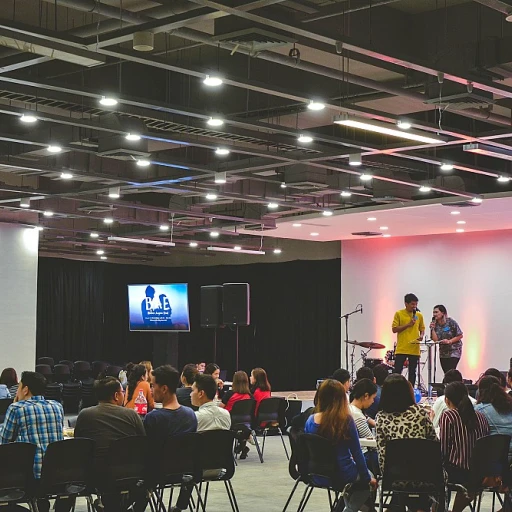Understanding Performance Improvement Plans
Understanding the concept of Performance Improvement Plans (PIPs) is a crucial foundation for achieving empowered employee growth and addressing any performance issues within an organization. Essentially, PIPs are strategic initiatives designed to provide clear and specific action plans for employees, helping them to tackle identified areas of improvement efficiently.Performance Focused Framework
Incorporating a performance-centric approach, these plans aim to bridge the gaps between current employee performance and the desired standards. They serve as a structured roadmap, featuring timelines and milestones, that can substantially help employees improve performance by setting smart goals.Clear Expectations and Support
A key feature of an effective plan PIP lies in establishing clear expectations for employee progress. This clarity is essential not only for managing performance improvement but also for fostering a culture of continuous development. By identifying gaps and aligning resources, management can provide the support and training needed.Integration of Feedback in the PIP Process
Regular check-ins and consistent feedback are integral to the PIP process, as they offer a constructive platform for both employees and management to address challenges and discuss potential strategies. This ongoing interaction ensures alignment with organizational goals, encouraging employee commitment to the improvement plan. By understanding the intricacies of performance improvement plans, organizations can effectively navigate the dynamics of employee management, supporting staff in their professional development journey, while simultaneously elevating overall organizational productivity.Identifying Skills Gaps
Pinpointing Areas for Skill Enhancement
Before embarking on a journey to ameliorate employee performance, it is essential to identify the specific skills gaps that might be hindering progress. This proactive approach supports the creation of performance improvement plans (PIPs) that are tailored to individual needs, making them more effective in addressing performance issues. Clear expectations from management provide a roadmap for employees, helping them understand exactly what is required to achieve success.
To accurately spot these areas for improvement, consider utilizing a combination of methods:
- Regular feedback: Establish a system of regular check-ins where both employee and manager can discuss performance openly. This dialogue can provide invaluable insights into areas needing enhancement.
- Performance reviews: Conduct comprehensive reviews that not only evaluate past performance but also set the stage for future growth. These reviews should be viewed as opportunities to align employee goals with organizational objectives.
- Surveys and assessments: Implement surveys or skill assessments that offer employees a chance to self-evaluate and pinpoint areas they feel require further attention or support.
After identifying the gaps, it's crucial to establish a clear and actionable plan for skill enhancement. This phase of the process aims not only to improve performance but also to foster employee engagement and satisfaction, as individuals feel supported in their journey of growth.
The PIP process should be viewed as a collaborative action plan between management and employees, focusing on how training and support can bridge these skill gaps effectively, ensuring long-term improvement and success.
Setting Achievable Goals
Crafting Realistic and Specific Objectives
In the realm of employee performance, setting achievable goals is a cornerstone for creating an effective performance improvement plan (PIP). These goals serve as the roadmap for the PIP process, providing clear expectations for both employees and management. When formulating these objectives, it's vital to ensure they are SMART: Specific, Measurable, Achievable, Relevant, and Time-bound. This approach helps in pinpointing areas of improvement while maintaining a realistic view of what can be achieved within the given timeframe. To craft these goals, it's necessary to involve employees in the process. This not only creates a sense of ownership but also ensures that the goals are aligned with their capabilities and the company's broader objectives. Employees should feel supported as they strive to improve performance, which can, in turn, enhance motivation and commitment. Moreover, providing clear and specific goals addresses any underlying performance issues directly, reducing ambiguities that could stall progress. Regular check-ins and feedback should be integrated into the PIP to review employee progress and tweak the action plan as necessary. This ongoing feedback loop helps keep the plan on track and demonstrates a commitment to performance improvement. Collating these elements successfully creates a well-rounded improvement plan. By setting realistic and transparent objectives, organizations can better help employees navigate their performance path, ultimately contributing to overall performance enhancement. For further insights on how strategic training leadership can contribute to this process, see the role of a chief training officer in reskilling efforts.Effective Training Strategies
Strategies for Effective Skill Enhancement
To effectively address performance improvement, it's crucial to equip employees with the right training strategies. An essential part of this process is tailoring specific training initiatives that align with the identified skills gaps, helping employees to focus on areas that need improvement. By providing clear expectations of what is required, employees can better align their efforts with the organization’s goals. Incorporating hands-on learning opportunities can significantly enhance the skills acquisition process. Practical exercises enable employees to engage actively with new concepts, thereby solidifying their understanding and application of these skills in real-world scenarios. Integrating these strategies into the performance improvement plan creates a structured environment for employees to learn and grow. Regular check-ins are another vital tool for driving progress. They offer an opportunity for employees to discuss any challenges they face, receive constructive feedback, and adjust their action plans. This ongoing support midway through the training helps in refining training approaches to ensure they are both practical and impactful. Consider incorporating various forms of training delivery, such as online modules, workshops, and peer mentoring. Each channel has its unique benefits, allowing employees to learn at their own pace while also promoting collaboration and knowledge sharing among peers. By implementing these strategies, organizations lay a strong foundation for not only improving employee performance but also for fostering a culture of continuous learning and development.Monitoring Progress and Feedback
Tracking Development: A Systematic Approach
As part of the performance improvement plan (PIP), tracking employee progress is crucial in ensuring that the strategies put in place are yielding the desired results. Monitoring is not just about keeping tabs on the time spent but involves a thorough examination of how effectively the employee is moving towards clear goals. Regular check-ins can provide an organized framework for feedback that is both constructive and supportive.
Performance management systems are pivotal in offering clear expectations and specific feedback. Employees benefit when managers provide ongoing feedback, allowing them to adjust their approach as necessary. It's vital to focus on specific areas of improvement when observing how employees are tackling their plan PIP. This targeted scrutiny helps to address performance issues directly and facilitates meaningful development.
Furthermore, employing a structured process ensures that the feedback translates into tangible improvement. Regular check-ins not only help employees stay on course but also reinforce the support they receive from management. These check-ins serve as an opportunity for employees to highlight any challenges they encounter, which can then be addressed collaboratively, enhancing the overall PIP process.
By maintaining an open line of communication, both management and employees can participate in refining the action plan. This collaborative approach fosters an environment where employees feel motivated to improve performance and gain the confidence to achieve more. In this manner, organizations can transform performance improvement plans into dynamic tools for skills enhancement and professional growth.












